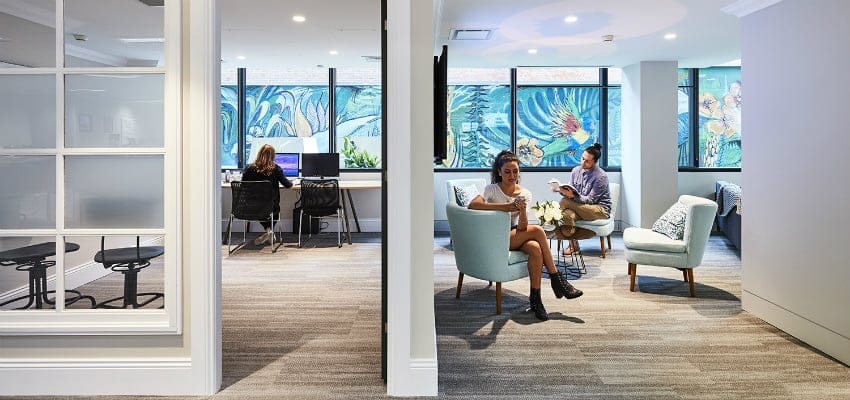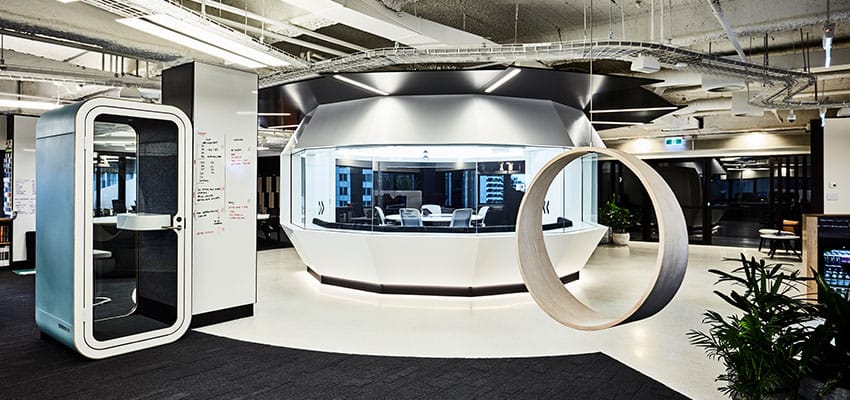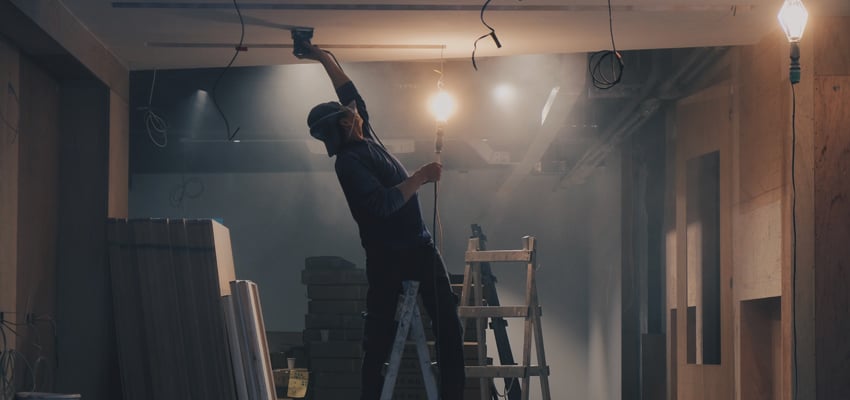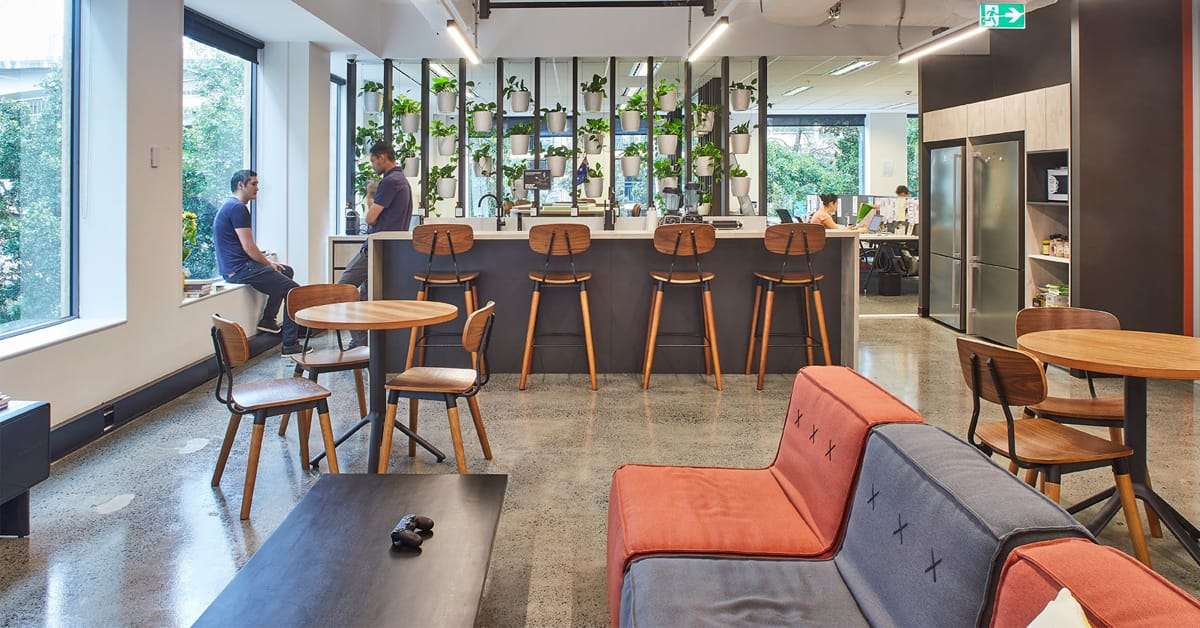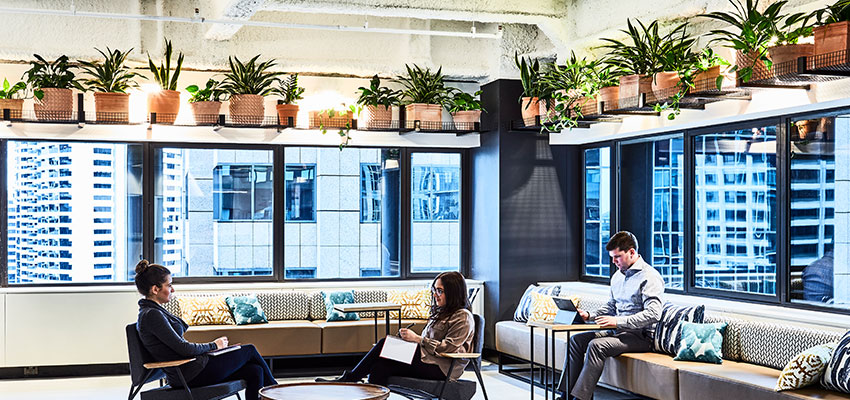5 office interior design trends you should know
At Axiom, we’re excited to see office interior design trends sweeping offices across Australia. These trends show we are clearly well into the era of “people power” – businesses are putting their most valuable asset, their employees, at the heart of their designs, and they are reaping the benefits in terms of more innovation, better productivity, and improved talent attraction and retention.
If you’re looking to outfit your office in the near future, these 5 office design trends will ensure you get maximum bang for your buck.
Infuse Hospitality and a Homely feel into the Workplace
When it comes to attracting the best talent, how a workplace looks and feels can make a world of difference. Businesses are designing more comfortable flexible workspaces and infusing a hospitality experience into the workplace in order to make them more appealing places to be.
Canva’s headquarters in Surry Hills, for example, offer cafes, bars, outdoor spaces, events, volunteering and collaborative work, as well as child-friendly zones, a gym, bike parking, e-charging stations and areas for meditation.
Designing Flexible Workspaces for Enhanced Productivity
Today’s businesses have to be agile – and so do their offices. Companies are therefore providing a wide variety of functional spaces in order to help their employees perform at their peak – think cosy, quiet nooks for deep concentration; standing meeting rooms for quick-fire discussions; comfy lounge spaces for informal chats and open-plan areas for teamwork.
The new Slater & Gordon office at Collins Street Melbourne, for example, was designed with flexibility in mind, featuring dedicated zones for concentrated work, casual areas to engage informally, collaborative zones for teams and mixed areas for sharing information.
Encouraging Collaboration through Innovative Interior Design
Collaboration is a key component of innovative businesses. According to a joint study by The Institute for Corporate Productivity and Babson College. Companies that actively work to leverage team collaboration as an organisational skill are five times more likely to be high-performing organisations.
For this reason, more businesses are cleverly using workplace design to foster collaboration between their employees, using features like open-plan areas, large communal desks and flexible breakout spaces.
Some companies are taking an even more unconventional approach. Hipages have some rare open space in the middle of Sydney’s CBD, with a patio space which is completely screened for their teams’ privacy, and fitted out with plants, lounges and deck chairs.
Adopt Sustainable Practices into Office Interior Design
Companies are taking sustainability seriously, designing energy-efficient office spaces that reduce costs while increasing employee satisfaction.
Seqwater, a major water supplier in Queensland, recently revamped their offices with a keen focus on sustainability. Key sustainable aspects of the project involved reusing and repurposing existing joinery, carpeting, and structural elements.
These initiatives greatly reduced landfill waste, reflecting Seqwater's dedication to sustainable practices.
Prioritising Health and Wellness in Modern Office Design
Companies that prioritise health and wellness in the workplace not only benefit their employees but also see improvements in their financial performance.
Numerous organisations use the WELL Standard as a framework to design their workspaces and enhance well-being. The WELL Standard offers a comprehensive collection of over 500 evidence-based strategies encompassing design, policy, and operations that, when applied, can elevate the health and wellness of your team.
- Improve air quality
- Ensure safe drinking water
- Reduce burnout
- Enhance sleep and mental wellness
- Cultivate a healthy culture
- Choose healthier materials
- Promote diversity, equity, and inclusion
- Encourage regular movement
- Cater to the diverse needs of hybrid, remote, and on-site workers
There are countless ways that environments can contribute to the well-being of their occupants, whether through better air quality, access to natural light, or spaces for relaxation and physical activities. At Chevron's Head Office in Perth, a wellness center offers massages and other spa treatments, alongside a tech and learning hub.
Ergonomic design is crucial, with height-adjustable desks gaining popularity. While the cost of replacing each workstation was once a hurdle for many office managers, there are now adaptable solutions that modify existing furniture for this flexibility. As standing desks become more popular, they also integrate seamlessly into the office aesthetic.
These 5 interior design trends suggest several ways to create a smart workplace design that promotes wellness and wellbeing at work and in turn fosters a positive workplace culture. A happy and healthy team equals a thriving organisation.
Learn more in our new guide: Workplace Design Trends 2024

